People active in the New Left and the anti-war movement evolved after the 1960s in many ways.
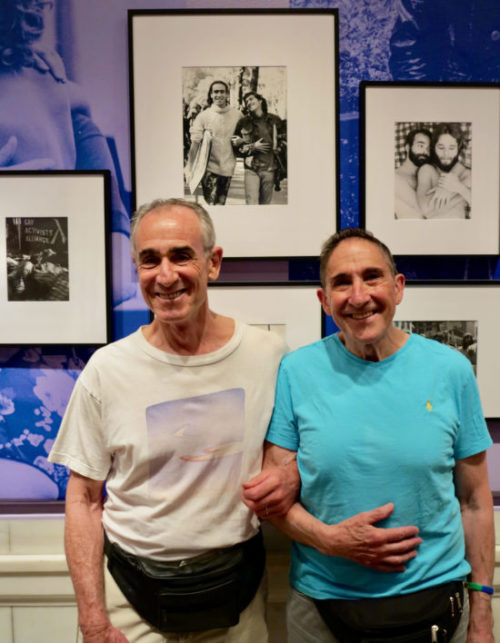
Ron Auerbacher and Jason Serinus reenact a 1970 photo (above) during exhibit at the
New York Public Library.
ROYALSTON, Mass. — The recent death of 1960s anti-war and New Left activist Rennie Davis is the inspiration for this article. Without judgment or advocacy, I want to explore the varied shifts in consciousness that have taken place in the lives of several people who, like Davis, were peace and social justice activists during the Vietnam War era.
Only a short time before his death, at age 80, Davis received some media attention because of a new movie about the 1969 Chicago Seven trial. In an obituary written for The Rag Blog, my college friend, activist and professor Jonah Raskin wrote, “Rennie was a man with a deep moral consciousness who aimed to follow the dictates of his heart and his head no matter where they might take him.”
Jonah could not avoid one of the most impelling aspects of Davis’ life, namely this much admired Students for a Democratic Society (SDS) leader’s shift from the political left to the spiritual realm, specifically as a follower and promoter of the 15-year-old guru, Maharaj Ji.
Jonah wrote:
After he joined his guru, he held a press conference in New York. I attended and listened attentively as he tried to explain his turn toward spirituality in terms of science. When one meditated and entered into another state of mind, he said, the human brain released a chemical and one saw God. I found that concept intriguing, but I didn’t buy it.
My friend and fellow New York Gay Liberation Front (GLF) member Ron Auerbacher, who had (like so many) relocated from New York City to the San Francisco Bay Area, attended a 1973 meeting in Berkeley where Davis announced his newfound loyalty to the guru. In an email, Ron wrote to me:
It was a mostly angry, volatile and hostile crowd. I was intrigued by his arguments about changing ourselves to become more effective social activists.
Ron mentioned that our fellow GLFer David Elbaz also became a follower of Maharaj Ji, and soon thereafter, Ron traveled to India to join an ashram run by another guru, Bhagwan Shree Rajneesh (1931-1990). There is more toward the end of this article about Ron’s evolution, but first, back to Rennie Davis.
Davis’s insightful obituary in The New York Times, written by Peter Applebome and including three photographs, took up an entire page. Read it if you want to learn more about Davis’s life. Here’s the link. You can also check out his Wikipedia page.
Applebome wrote:
As the energy leached out of leftist politics, Mr. Davis’s promotional instincts took a surprising turn when he accepted a free plane ticket to India to learn about Guru Maharaj Ji. He later said that the experience had filled him “from head to toe with light.” He became a convert and spokesman for Maharaj Ji (who was born Prem Pal Singh Rawat), saying the guru’s teachings would provide “a practical way to fulfill all the dreams’” of the 1960s, “a practical method to end poverty, racism, sexism, imperialism.” At 32, he proclaimed, “I would cross the planet on my hands and knees to touch his toe.”
The obituary added this:
Many former allies saw Mr. Davis’s mystical detour as a depressing generational metaphor. ‘”Everyone was trying to reinvent themselves after the stuffing of the New Left had fallen out, trying to find ways to heal their broken psyches,” the author and scholar Todd Gitlin said in an interview for this obituary in 2018, “and Rennie took the most garish, the most mockable, the most virtually self-caricatured of those paths.”
I have opened with these details about Rennie Davis because his evolution was similar to that of many others in its attempt to link his 1960s activist values to something new and possibly more successful in the future.
As for me, I was totally unsympathetic to gurus and other spiritual baggage, as I was a hard-core atheist (and secular Jew) and remain that way to this day. I had my own evolution, taking me from SDS and the New Left’s Liberation News Service (LNS) to gay liberation, back-to-the-land with rural communal living, environmentalism, satisfying jobs, home ownership, and membership in the Democratic Party. You can read more about me in my autobiography, Left, Gay & Green: A Writer’s Life, reviewed for The Rag Blog by Jonah Raskin. Find it here.
There were numerous books that caught the attention of many people trying to make satisfying choices while drifting away from or simply breaking with the New Left. I heard about all of these books, and read just a few of them. Here’s my casual list in order of their publication year.
Autobiography of a Yogi, by Paramahansa Yogananda (1946), The Way of Zen, by Alan Watts (1957), Silent Spring by Rachel Carlson (1962), The Feminine Mystique by Betty Friedan (1963), The Teachings of Don Juan by Carlos Castaneda (1971), Diet for a Small Planet by Frances Moore Lappé (1971), and Small Is Beautiful by E.F. Schumacher (1973).
Ray Mungo, who had created an enjoyable picture of the 1960s with Famous Long Ago: My Life and Times with Liberation News Service (1970) quickly followed by recounting his back-to-the-land experience in Total Loss Farm (1970).
No longer very popular were Das Kapital by Karl Marx (1867), What is To be Done by Vladimir Lenin (1902), The Wretched of the Earth by Frantz Fanon (1961) and Quotations from Chairman Mao Tse-tung ( “The Little Red Book”) (1966).
People who were active in the New Left and the anti-war movement evolved after the 1960s in so many ways. Many, like me, were not at all drawn to the concept of a so-called “New Age” or any Eastern religion. For example, Paul Millman, a long-time SDS member, relocated from
New York to Vermont and became involved in a worker-owned manufacturing company. When he retired, I told his story here on The Rag Blog. .
Perhaps the most important book that documented and encouraged political evolution by the
largest number of people (mostly women) was Sisterhood is Powerful (1970), edited by Robin Morgan. She clearly characterized the writings she gathered as largely a response to the male-dominated left. I know some of the writers in that book and asked them to comment on their evolution “from the left to feminism.”
Martha Shelley, whom I first met at a 1970 meeting of the New York GLF, now lives in Portland, Oregon, with her wife, Sylvia Allen. She remains involved in social justice issues and also tends to a small farm including some chickens. In a 1970 commentary about sexism and the left, she wrote this memorable line: “Marxist, Schmarxist, get off our backs!” Here’s Martha’s reply to my email about her consciousness shift:
I never made a transition from New Left to feminism. In 1963, when I was 19, someone recommended The Feminine Mystique. I’d always resented the limitations imposed on my sex, but it wasn’t until reading it that I consciously identified with the nascent women’s movement. During that same year I traveled to Washington, D.C., on my first anti-Vietnam War march — and continued opposing the empire’s wars, up to and including the invasion of Iraq. So all my adult life, I’ve been both a feminist and a leftist.
Marge Piercy, the prominent author and poet, who lives with her husband Ira Wood in Wellfleet, Massachusetts, and also has a long-term commitment to gardening, emailed this:
I was already involved in women’s liberation during my time in the regional office of SDS in New York City and when I was organizing Movement for a Democratic Society with Bob Gottlieb. I’d say the major evolution of my politics came when I moved to Wellfleet on Cape Cod and became far more aware of nature, issues like fresh water, overfishing, the danger of nuclear power plants, endangered species, etc. My feminism has remained just as strong or — after my long difficult divorce from my second husband — even stronger. My anti-war activities have remained. I just added ecological issues. Also, as I wrote more full time here, I began to reach far more people with my writing than with my organizing, although that didn’t stop me from helping create four feminist and ecological groups.
Most perplexing to me were the shifts in consciousness that involved Eastern Religion or other more vague spiritual notions. This article continues with portraits of three long-time friends, Katya Sabaroff Taylor, Jason Victor Serinus. and Ron Punit Auerbacher, all of whom I first met a half-century ago.
Nina Sabaroff worked with me at LNS and also shared a communal apartment with me and other LNSers, and she became one of my most trusted friends at that time, so we naturally stayed in touch over the years. Nina had leftist parents and went to Antioch College in Ohio (a school well known for leftist and counter-culture leanings). She was working on a master’s in education degree at Columbia University when anti-war protests gripped many campuses and she started working for LNS. After leaving New York, she lived in Portland, Oregon, for a while, participating in the lively women’s movement there. At some point, she had a consciousness shift that led her to change her identity somewhat by changing her name to Katya. She told me later that she went from being a “revolutionary” to being a “healer.” She also married and moved to Tallahassee, Florida with her husband Tom (a college professor who specialized in conflict resolution). The couple has one child, Alana.
Katya considers herself a writer first and foremost. She is the author of Journal Adventure Guidebook, My Haiku Life, Wheel of Belonging, Faith Columns and Sermons, and Prison Wisdom. She is completing her memoir, My Life as a Poet. Visit her website. Katya earned her massage therapy license and had a private practice and taught workshops in “healing touch,” for 30 years, as well as being certified as a yoga teacher. She also wrote for a local newspaper and taught writing to people from all walks of life (including prison inmates). See the Rag Blog review of her book, Prison Wisdom and Thorne Dreyer’s Rag Radio interview with her. In the spiritual realm, Katya became involved with Quakers, Sufi dancers, and the Unitarian Church where over time she delivered seven lay sermons. Here is her email to me about her transformation:
I think evolving is a natural progression. In my opinion we don’t really leave behind our past personas, we simply integrate them and move on. i.e. Nina was a writer, Katya is a writer, Nina cared ahout people’s suffering, Katya cares about people’s suffering. Nina loved cats, Katya loves cats! And so on. That said, I will add that my years as a New Left radical deeply impacted me. Working at LNS during the tumultuous years of 1968-71, working as a radical feminist at a women’s free health clinic (1971-73), and teaching women’s studies (1973-75) made me feel as if I was supporting causes that benefited all of humanity, both humbling and glorious. What made me shift into becoming a healer (massage therapist/yoga teacher, later writing teacher as well) was the exhaustion of seeing life as a fight, a struggle, always righteous, often angry. Changing my name to Katya, in 1976, was a spiritual turning point. As Katya, I established Creative Arts and Healing and dedicated myself to helping others experience how these modalities are linked. Besides workshops in massage and yoga, I taught creative writing in the prisons for 25 years, and also at assisted living centers, to self-help groups, etc. I feel, at the age of 77, as if I have integrated the gifts of both Nina (the Radical) and Katya (the Healer), and am happy with the merger.
I gave some thought to Katya’s view that “evolving is a natural progression” That may be true, but there are many people who don’t evolve, and also the depth or intensity of the evolution can vary and is not always positive. For example, David Horowitz evolved from “red diaper baby” and Ramparts magazine editor to extreme right-winger enamored of Ronald Reagan and he embarked on an endless harsh critique of the left. Horowitz remained politically dogmatic so in a sense that’s no evolution at all, just a shift in his brand of zealotry.
I met Jason Victor Serinus in 1970 when he was known as Jay Guy Nassberg. He lived with me and Ron Auerbacher in the 17th Street Collective, a GLF affiliate. Our friendship was initially based on our shared background in the New Left. Jason already had an interest in classical music and audio equipment, and he playfully liked to whistle. He later turned these interests into a major focus of his life. Here’s what he emailed to me, lightly edited for space reasons:
In 1965, when I was 20, I transformed into an activist. I was a civil rights worker in the Southern Christian Leadership Conference (SCLC) summer season voter registration program, an SDS organizer at Amherst College, SDS campus traveler in the Midwest and organizer of the Midwest’s first draft resistance conference, a cane cutter in the first Venceremos Brigade, founder of New Haven GLF, member of New York GLF, and resident of two pioneering gay men’s political collectives in New York City.
After relocating to San Francisco and engaging in more activism, I came to the realization that all political systems are outward manifestations of people’s internal spiritual states. Hence, as in the 1960s, I went back inside. That didn’t stop me from becoming the second out gay body worker in San Francisco, joining the founding collective of Fruit Punch Gay Men’s Radio on KPFA-FM (the first gay radio show in the US), leading gay men’s massage retreats, writing for the gay press, editing a major book on holistic healing of AIDS, starting and leading the Castro Street Healing Group, and writing many of the articles on holistic / alternative approaches to AIDS for one of the gay papers of SF, the San Francisco Sentinel. But my work was definitely more inwardly focused.
I began working as a whistler in 1973, first on Fruit Punch, then at the gay Corner Grocery Bar in the Castro district. In 1976, I was already using a ‘”stage name,” Jason Serinus, when I lost all my ID. When I reported this to a gay man who did Tarot readings on the street, he said, “You’re going through an identity change.” To which I replied, “That’s it, I’ve become Jason Serinus.” Four years later I was whistling on The Tonight Show and as ‘The Voice of Woodstock’ in an Emmy-nominated Peanuts cartoon. My middle name, Victor, is my ministerial name in the Church of the Gentle Brothers and Sisters, into which I was ordained as a minister sometime in the late 1980s (I think). I also built a career as a music and audio critic, currently for Stereophile. I’d never wanted a fancy car or a house; all I wanted was a stereo system that would take me closer to the point of creation for the artists I love. My politics are more than apparent in the music I choose to review.
After years of being involved in community policing, my husband David and I sold our home in Oakland, Calif., and relocated to Port Townsend, Washington, in 2014. On June 26, 2015, following the decision of the U.S. Supreme Court on same-sex marriage, I organized a victory celebration in Port Townsend. A few years later, I helped push the City Council to become a “welcoming city.” I continue to see myself as an activist, most recently via my chairmanship of the Port Townsend Arts Commission, which has made a strong commitment to diversity, my participation in multiple Black Lives Matter actions, and my constant raising of gay issues in our community. The common thread that bonds the civil rights worker of 1965 with the music and audio critic / whistler / arts commissioner of 2021 is the desire to build community, erase artificial barriers, work for freedom, and celebrate our common humanity. Ultimately, I see my path as one of yoga = union, be it union of oppressed people with each other, unity within self, or the opening of the heart that leads to internal integration and union.
Without specifically challenging Katya and Jason, I feel the need to interject my own skepticism here about the way some left-leaning people join with right-wingers in an anti-science approach to modern medicine. This includes anti-vaccine campaigns and fad diets. There is too much disdain and finger-pointing that dangerously belittles the amazing accomplishments of pharmaceutical researchers, doctors, and hospitals. While there is a place
for criticism and response to problems in health care such as greed and elitism, it troubles me when good people promote themselves as healers without scientific basis. Using words like “holistic” and “alternative” does not necessarily make something good or valid.
Ron Auerbacher (mentioned above) lived with me for a while in a New York Gay Liberation Front (GLF) commune. In 1969, before he got involved in GLF, he participated in the first Venceremos Brigade that traveled to Cuba to learn about the Cuban Revolution and cut sugar cane as a volunteer to show solidarity. I perceived him as a leftist but his narrative has its complexities, as with everyone!
He now lives in San Diego, where he used to practice and teach massage therapy. He has acted in local theater, manages a communal house, is affiliated with the local Zen center, teaches classes in “non-violent communication” and is a guest speaker in local schools on gay issues.
Here is Ron’s politics and spirituality narrative written at my request:
My idealistic influences start with the fact that my father and his family fled Nazi Germany before World War Two. My mother hated her role as a subservient 50s housewife and was also severely mentally ill. She called herself a pacifist and almost attended the experimental and arts oriented Black Mountain College. While I was in high school in the early 1960s, she and I would watch civil rights demonstrations on TV. My best friend introduced me to the writings of Ghandi, James Baldwin and Gore Vidal, explaining to me that the Vietnam War was actually an invasion, and that the U.S. an imperialist empire.
Once in college, this same friend volunteered with SDS community organizing projects in Newark, N.J., and I visited him there, also attending anti-war demonstrations in the late 1960s. As a student at Yale University in New Haven, Conn., I could see for myself the gross inequality of the Black “ghettos” right next to the luxurious campus. I had also seen these contrasts when I was growing up in St. Louis, Missouri.
Another high school friend had visited Cuba while in the Peace Corps and when I saw a flyer for the Venceremos Brigade, I was eager to see another kind of society, with my hope that societies could be organized for the benefit of all.
I attended Yale for only three weeks and was subsequently hospitalized for three years for severe depression, inability to study and sharing with a psychiatrist my concerns about my “homosexual thoughts” (as psychiatrists at the time characterized homosexuality as a mental illness).
Even after my Cuba experience and joining GLF, I still suffered from depression. The Beatles, Ram Dass (author of Be Here Now) and a GLF friend (David Elbaz) persuasively argued the importance of finding a guru to transform oneself, promising both community and complete, ultimate peacefulness. I did find some relaxation in practicing yoga and found Bhagwan Rajneesh’s promises of permanent enlightenment enormously compelling.
The downsides of the Ranjeesh community, which had relocated to Oregon (documented in the Netflix series “Wild Wild Country”) and where I lived for several years were the criminal activities, the dependence on authority figures, and the lack of training in concrete skills in both meditation and psychology.
Our Americanized Zen center in San Diego has combined pragmatic cognitive and meditation practices that give me tools and guidance with which to address both my personal psychological tendencies of depression and anxiety and life’s inevitable challenges, particularly now that I face a deteriorating body with its frustrations and limitations.
So the Big Question is this: If we humans have all the resources, imagination and organizational abilities to end war, poverty, racism, sexism, inter-tribal hatred, then why haven’t we done so? Are human beings genetically defective or biologically locked into “survival of the fittest” and individualism?
The premise of internal practices is that there must be something inside us that is blocking our doing so and that “something” IS changeable with effort.We know that it took immense amounts of cooperation for tribes to live and hunt together, to create agricultural societies and eventually to create modern cities. We know that it feels good to help others when we don’t feel threatened and to work together for a common good (theater or scientific research for example).
The inspiration of all religions and contemplative practices is that humanity can recognize our interdependence and the inherent humanness and worth of others, no matter how different they appear or how different their cultural habits are. That was what appealed to me when I heard Rennie Davis in 1973. Many of the books and cultural icons at that time argued that we couldn’t do this work by ourselves, that we needed a guru, which in many ways perpetuated the already harmful practices of power over others, dependency, and the idea that “I’m not OK and you are.
For me, the best parts of “religion” (a word I tend to avoid) are the inspiring reminders that with effort we can change ourselves (self-centeredness / me against you) and therefore work more effectively with others to create a world that works for everyone. The climate emergency is the best reminder that ‘we are all in this together.
I responded to Ron that I remain an atheist and that, to me, religion is a huge problem because religions, despite positive aspects, often promote hatred and violence. He replied and added some further comments, and I’m ending this essay with Ron’s words:
I wholeheartedly agree about the harm that religions have caused. The problem once again is with the deeply ingrained habits of mind of the humans practicing them. If the word religion conjures up a duality of god/no god, let’s use another word. I personally don’t consider Zen practice as a religion.
Having also spent much of my life benefiting from and practicing “alternative” or complementary therapies, I see their value as well as the value of the scientific method. Once again “either/or” instead of “both/and” thinking is a impediment. If the challenge of individualism, self-centeredness and inability to work together isn’t solved/resolved, then we will continue to have religions as they have been (war), politics as it has been (American, Russian, Chinese and Cuban revolutions which did not live up to their promises), infighting among groups that have the best intentions, and ecological destruction.
Yeats identified the challenge:
“A beggar upon horseback lashes a beggar on foot.
Hurrah for revolution and cannon come again.
The beggars have changed places but the lash goes on.”
Nonviolent Communication developed by Dr. Marshall Rosenberg asserts that because all humans share the same needs (but different strategies) for safety, community, choice, respect, creativity and meaning, we have the ability to understand each other and work together — IF we make the effort.
Contemplative practices give us an opportunity to disengage from our attachments and judgments of others and ourselves so that we can become more cooperative. Societal and systemic change gives us more safety, security and choice. Each enhances the other.
The Unitarians have a song with a line that goes: “Let there be peace on earth & let it begin with me.”
And then, I would add: Get out there and utilize your skills to create a better world. (What the Jews call Tikkun.)”
[Allen Young has lived in rural North Central Massachusetts since 1973 and is an active member of several local environmental organizations. Young worked for Liberation News Service in Washington, D.C., and New York City, from 1967 to 1970. He has been an activist-writer in the New Left and gay liberation movements, including numerous items published in The Rag Blog. Retired since 1999, he was a reporter and assistant editor of the Athol (Mass.) Daily News, and director of community relations for the Athol Memorial Hospital. He is author or editor of 15 books, including his 2018 autobiography, Left, Gay & Green; A Writer’s Life — and a review of this book can be found in The Rag Blog archives.]
- Read more articles by and about Allen Young on The Rag Blog and listen to Thorne Dreyer’s June 19, 2020 Rag Radio interview with Allen.

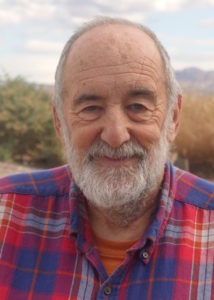
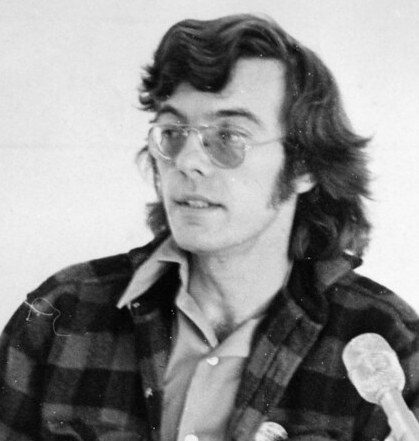
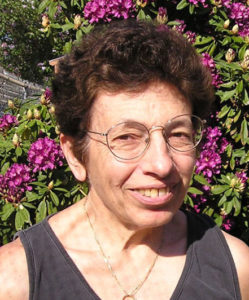
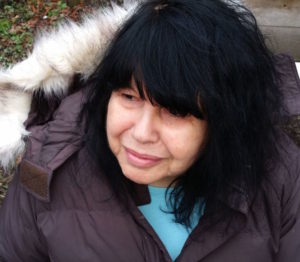
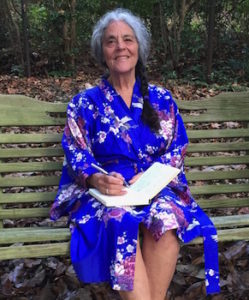
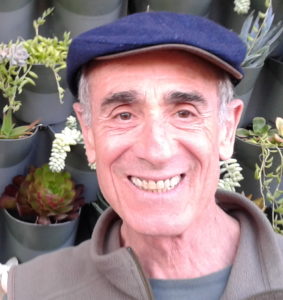

















I really enjoyed this post from Allen Young. I guess there is no reason to expect that New Left activists would all fol.low more or less the same path. In this sense, it is perhaps not correct to talk about “deviations.”
I agree with Allen about religion — organized or otherwise. I am not moved by the call to “spiritual values” grounded in some believe in an afterlife or a God-like figure.
I read a lot of Marx and some Lenin, but never the Little Red Book. In my mind, Marx remains a prescient thinker, understanding the essential exploitation and marginalization built into corporate capitalism. I remain strongly committed to the hope for an alternative future of raical justice and something other than capitalism. I would call it socialism.
I do vaguely remember Rennie Davis. I remember Bill Kunstler in Austin much better. I got to know Tom Hayden later. I have great respect for the later two, despite their flaws. Rennie Davis going over the “the light” is a bit of a mystery, and I failed then, as now, to discern anything there in this “found spirituality” for me.
I see younger people today — including my own children — not knowing very much about the New left — both the joy of challenging the system and the fear of repression. I see the politics of today as being somewhat narrowly focused, and somewhat intolerant.
But Allen Young’s commentary gave me some joy and some hope.
Martin
Thanks for your article, Allen. I’ve really enjoyed reading about the paths of our fellow organizers. Ending it with Punit’s explication is an especially good touch.
Martin, you’re lucky you haven’t read The Red Book. It is as pedantic and simplistic as hell. Right before coming out, I lived in a five-person political collective in New Haven and worked on the Bobby Seale trial. Each morning for a week or two at the most, we attempted to sit in a circle, read a passage from The Red Book, and then discuss it aloud. It was more deadening than the deadening physics lectures I slept through during my freshman year at Amherst. I’ll never forget the afternoon when, in a desperate attempt at remaining coherent, I walked out of our discussion circle to heat water for a cup of instant coffee. As I stood over the stove, much taller Dick Mann, brother of labor organizer Eric Mann, walked in. Towering over me, he turned off the light on the stove and declared, “You are not having another cup of coffee. You are going back inside and reading The Red Book.” It took but a few days more before Eric, too, realized that there was far more to life than The Red Book.
One advantage of getting this far in life: I’ve had both my shots, and was able to return to the gym yesterday. Double-masked and cautious, of course. Then again, I no longer live in Manhattan or Oakland, but in Port Townsend. So it’s somewhat safer here.
Be well, everyone. Keep the faith. And don’t worry, Allen. Someday, we’ll all get together, tie you down, cover you in lavender oil, and whip you with flowers and dandelion greens until you yell “Hare Krishna.”
jason
Jason Victor Serinus, healer-man, you made me laugh. You mention lavender oil. Believe it or not, when I told my primary care physician recently that I was experiencing a lot of anxiety related to Trump and Covid and I suggested maybe a prescription for Valium would help, he said “no,” and recommended lavender oil softgels to take because serious research in Europe showed that these would relieve anxiety. Has it worked? Well, Trump did leave the White House and I’m getting my second vaccine shot tomorrow.
I commend Allen for the work he put into creating this essay. He is always so thoughtful and direct when exploring an issue, and I am grateful to be included in his “research” about my own evolution over time. Thanks, Allen! And thank you Thorne for giving him a place to share his ponderings.
Hi all,
Allen asked me to write a paragraph for this article, so I kept it short. Just want to add that I am the author of three poetry books, three novels, and numerous essays and short stories. You can find the novels–the Jezebel trilogy–at http://www.ebisupublications.com, and read my blog there as well.
Hi Martha, it was fun reading your paragraph in Allen’s recent analysis of how people evolve over time (from radicals to… whatever). Thank you for sharing, above, the link to your books! I will definitely look to find them.
Your sister in “herstory…” xo Katya
There are hundreds of examples of the merging of contemplative practice & social activism. Those I’m most familiar with are:
The Dali Lama’s work on environmental justice & climate change
Bernie Glassman’s engaged Buddhism & the Zen Peacemakers
Thich Nat Hanh’s opposition to the American War in Vietnam
Joan Halifax and others’ hospice work
Many meditation workshops in US prisons
The Faithful Fools
Catholic Worker Movement
The Unitarian & Episcopal Churches social justice programs
yes, you re so right. there needn’t be a polarization between political and spiritual. there is one earth, one humanity, and we need all the courage and healing we can get! xo katya
I am an old friend of Ron Auerbacher’s from our days in Stockbridge Mass. in the mid sixties. At one point a number of us caravanned to DC for an anti Vietnam War demonstration. After Ron toured the South and the freedom riders, he returned and told me “You are a community organizer!” I did end up working as a parent organizer for Head Start but left to finish college.
Over the years as Ron visited from California, he was always on his way to or from “Allen’s house” a bit north of me in Mssachusetts. This article has been wonderful to read. Congratulations to all of you for your lives lived and being lived.
How great to read your comment, Beth. Punit and I were in Cuba together, in GLF and two collectives in NYC together, and bodyworkers together. For all I know, we were all at the same big anti-Vietnam War march and action in D.C. Recently I joined him for a presentation to high school students in San Diego. The circle widens. Much love to you,
jason
Thanks Allen and all! Katya, yes, “there needn’t be a polarization between political and spiritual. there is one earth, one humanity, and we need all the courage and healing we can get!” After a couple of decades of being angry, rebellious, loving and celebrative within the confines (and divines) of white, religious, farmer culture I began diving into similar experiences in black, atheist, hippie, radical, urban, art, dance, and other cultures, increasingly sensing being both in awe and one with it all. For example, teaching fellow GLFers how to shoot guns (to fight the revolution) evolved into sharing locomotor skills with kids in rural schools, realizing ways we form fun and functional community by creatively moving together, interacting, supporting, singing. That blossomed into Kalani Honua center, a “harmony of heaven and earth” balance of the ethereal and physical, fantasy and reality, with focus on nature, culture, wellness and sustainable living education in the spirit of ‘ohana and aloha. My art and writings, all keys to ascending in love, are available via https://www.amazon.com/-/e/B00OC232EI, include PROMPT – Inspirations, Revelations; LAVA LOVE – With Heart and Art We Connect, Rebel and Create; Ka LĀ – The Light; Ka PŌ – The Night; E HO MAI – A Tale of Youthing; and KALANI – A Leap of Faith, Hope and Love.
Allen asked me to write something because I contributed to Sisterhood is Powerful. Then we froze in Texas. (Excuses, excuses). Marge Piercy wrote a book, Braided Lives. That’s how I think of the evolution of my activism with different strong strands overlaying: participatory democracy, women’s liberation, to name a few. Still active and more aware of the fact that I grew up in the Jim Crow south, that the 60s integration battles here just pulled the curtain back to expose the structural racism. Always grateful for the voice that the women’s movement gave me and so many others. Grateful for a younger generation of feminists who have taught me a lot. Thanks, Allen. Your article embraces the fullness of life and the rich variations of activism.